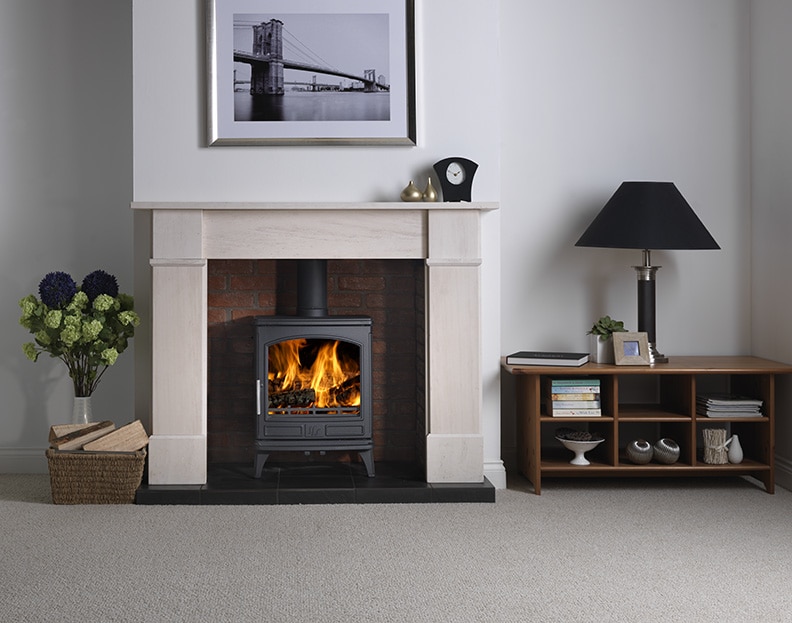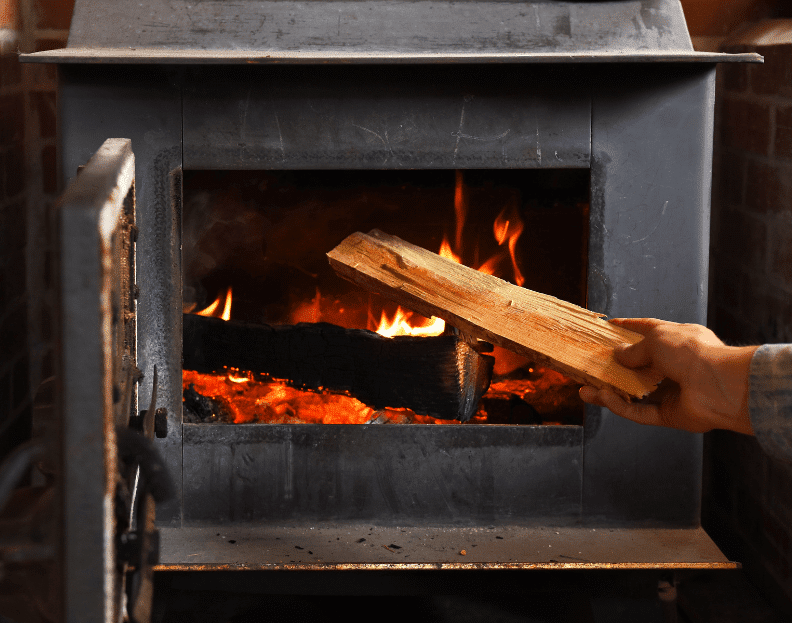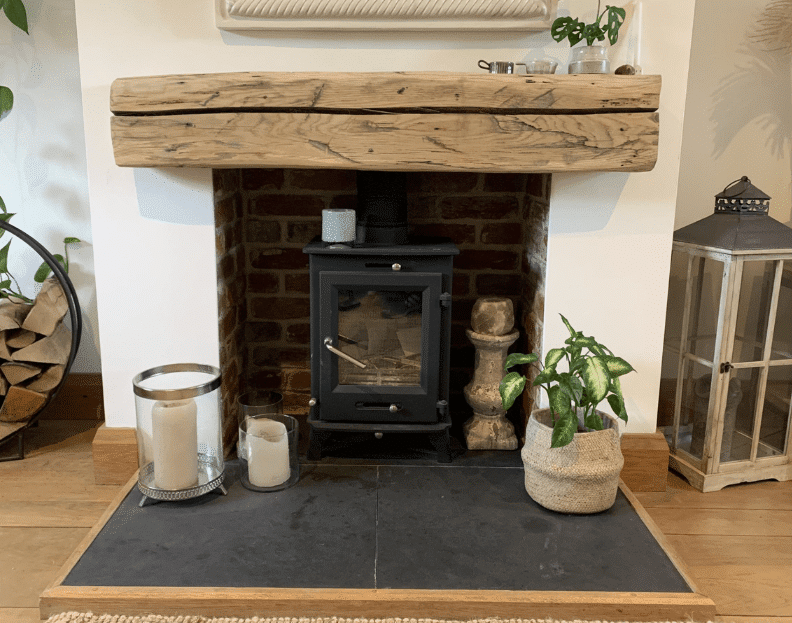Efficient Heating Tips for Autumn and Winter
As the cooler months begin to roll back around, there’s nothing quite like the warmth and comfort of a roaring fire in your fireplace. To make sure you get the most out of your heating while keeping your bills in check, it’s important to understand how to maximise your heat output and minimise any heat loss.
As HETAS-accredited stove and fireplace installers, we have put together our practical types on arranging logs, using dampers effectively and how to optimise airflow to create an efficient yet cosy and comfortable heating experience during the colder months.
Strategic Log Placement
The way you arrange your logs in your stove or fireplace can have a significant impact on your heat production. Start by placing your larger logs at the bottom to create a sturdy base. Gradually layer smaller logs on top, followed by kindling and fire-starting materials. This “top-down” method allows the fire to ignite more easily and produce a steady, longer-lasting burn.
Correctly placed logs ensure a continuous supply of fuel which maintains a consistent heat output, and the top-down method produces less ash which reduces the need for frequent cleaning.
Damper Control
Dampers are essential for controlling the airflow in your stove or fireplace. The primary damper, which is typically located near the firebox, helps to regulate the amount of oxygen that feeds the fire. Adjusting the damper can help you control the burn rate and heat output, with opening the damper fully at the start ensures a strong fire ignition. As the fire establishes, gradually adjust the damper to find the optimal balance between heat production and burn efficiency.
Proper damper control prevents excessive fuel consumption, and in turn, promotes efficient burning. Adjusting the damper allows you to fine-tune heat output to match your personal comfort level.
Optimising Airflow
Correct airflow is key to a well-burning fire. An adequate oxygen supply supports combustion and promotes efficient heat generation. Ensure that the air vents on your stove or fireplace are open and unobstructed. If your stove has secondary burn chambers, familiarise yourself with how they work and use them to extract additional heat from the combustion process.
Optimised airflow encourages complete combustion, resulting in higher heat output. Sufficient oxygen also minimises the production of smoke and harmful pollutants.
Using Firebrick or Thermal Mass
Placing fire brick or other thermal mass materials at the back of your stove can help absorb and radiate heat even after the fire has died down. This technique, known as thermal mass placement, extends the heating effect to keep your living space warm for a longer period.
Thermal mass materials store heat and gradually release it, providing extended warmth. With residual heat, you can reduce the frequency of refuelling or igniting new fires.
Prepare for Winter with Incendium
As the summer months roll into autumn, mastering the art of efficient heating becomes essential for both comfort and energy savings. As well as these handy tips, it is important to make sure you have the correct size stove for your home. Alongside an optimal-sized stove, choosing the correct fuel types will go a long way to ensuring long-lasting heat. These practical tips not only help to enhance your heating but also contribute to a more sustainable and cost-effective winter heating strategy.
Stay warm and cosy with your stove or fireplace this winter. Get in touch with Incendium Stoves and Fireplaces today to discuss the installation or maintenance of your new stove.






